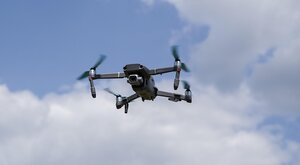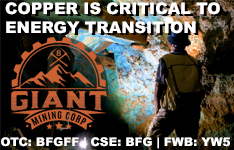DroneShield Ltd. (DRO:ASX; DRSHF:OTC) reported record financial results for the third quarter of 2025, highlighting significant growth across its key performance metrics as demand for counter-drone technologies continued to rise globally. According to the company's Q3 2025 report and investor presentation, revenue reached AU$92.9 million for the quarter, representing an increase of 1,091% over the same period in 2024. Year-to-date committed revenue totaled AU$193.1 million as of October 2025, surpassing the company's full-year 2024 revenue of AU$57.5 million.
Cash receipts for the quarter reached AU$77.4 million, up 751% year over year, while software-as-a-service (SaaS) revenue rose to AU$3.5 million, a 400% increase from the prior-year quarter. The company emphasized the growing importance of SaaS revenue as part of its long-term model, citing changes in drone technology and the launch of SentryCiv, a subscription-only offering for the civilian sector.
DroneShield also reported positive operating cash flow of AU$20.1 million in Q3 2025, compared to a negative AU$19.4 million in Q3 2024, making it the company's most profitable half-year period to date with AU$5.2 million in profit before tax. As of October 14, DroneShield held a cash balance of AU$235.2 million and no debt.
Concurrent with the financial release, the company announced an expansion of its senior technology leadership. Angus Bean remains Chief Product Officer, joined by new leadership focused on scaling engineering capacity and product innovation. The company stated that the expanded team would support the delivery of scalable, AI-powered counter-drone solutions to military and civilian customers worldwide.
On October 19, Bloomberg reported that CEO Oleg Vornik described growing interest in DroneShield's technologies from both defense and civilian sectors. The article noted that approximately half of the company's US$60 billion total addressable market was in the civilian segment, citing airports, data centers, and other infrastructure targets as key areas of demand. Vornik pointed to the August launch of SentryCiv, a solution tailored for non-military use, as a product expected to meet this demand. According to Bloomberg, DroneShield shares climbed as much as 6.3% following the release of its Q3 results, which included a record AU$92.9 million in quarterly revenue and AU$193.1 million in year-to-date committed revenue.
Rising Drone Threats Drive Counter-UAS Industry Expansion
The counter-drone industry has seen a dramatic surge in relevance and scale as defense and civilian agencies respond to the rapid evolution of unmanned aerial systems (UAS). A September 29 report from Air & Space Forces Magazine detailed the operational challenges posed by low-cost, mass-produced drones, particularly in conflict zones like Ukraine. Col. Jim Price of the U.S. Air Combat Command highlighted the significance of Ukraine's Operation Spiderweb, stating it "successfully destroyed multiple strategic aircraft deep inside of Russia." He emphasized that such attacks demonstrated the strategic risks of underestimating small UAS and underscored the need for a generational shift in defense approaches.
Concerns about operating counter-drone weapons in urban environments were also raised. Kons Muhtaris, director of counter-unmanned systems at L3 Harris, noted that "you can't do certain electromagnetic effects in certain areas, because it may interfere with some of these cell phones or other communications infrastructure." He stressed the importance of rapidly identifying drone control methods, whether via radio frequency or fiber optics, to neutralize them effectively.
On October 20, Bell Potter Securities analyst Baxter Kirk maintained a Buy rating and raised the firm's 12-month target price for DroneShield to AU$5.30 from AU$3.70.
The report identified artificial intelligence (AI) and machine learning as key drivers of this growth, enabling faster drone detection and enhanced mitigation strategies. Ground-based systems currently hold the largest market share due to their responsiveness and wide coverage area, while UAV-based solutions are expected to expand rapidly.
The hardware segment led the market in 2025, bolstered by advances in radar sensors, infrared systems, and jammers. However, software was identified as the fastest-growing segment, with AI integration improving threat recognition and response precision. Defense and military applications accounted for the majority of demand, driven by the systems' adaptability across environments and reliability in neutralizing drone threats under varied conditions.
A report published by the Wall Street Journal on October 18 detailed a wave of innovation from startups across Europe and the U.S. responding to drone threats beyond traditional battlefields. These companies have developed a wide range of counter-drone technologies, including explosive drones, laser systems, net launchers, and high-speed interceptors designed to ram into targets.
According to the report, the diversity of drone threats has necessitated a layered approach to defense, as "hostile drones come in all shapes, sizes, speeds, and altitudes." NATO, Germany, the U.K., and other countries have accelerated counter-drone efforts, often learning from Ukraine, where interceptors and networked detection systems are already in combat use. While many technologies remain in testing phases, solutions such as net-based capture systems and microwave weapons have gained traction for their ability to neutralize drones without collateral damage. "Interception is very hard," said Sven Kruck, co-CEO of Quantum Systems, emphasizing the challenge of balancing cost, precision, and scalability.
Analysts Emphasize Market Leadership and Expansion Potential
On October 1, Shaw and Partners reiterated its Buy rating on DroneShield and emphasized the company's AI-driven product advantages. Analyst Abraham Akra wrote that DroneShield's DroneSentry system was "best in class" due to its integration of artificial intelligence, which reduced operator workload and improved threat detection.
He noted that "passive RF sensing and artificial intelligence fusion favor DroneShield, whose portable DroneSentry kits scale cheaply." Akra also highlighted the company's strategic fit with emerging counter-drone initiatives, including proposals for a multilayered "drone wall" across Eastern Europe, and identified DroneShield as a potential preferred supplier.
On October 20, Bell Potter Securities analyst Baxter Kirk maintained a Buy rating and raised the firm's 12-month target price for DroneShield to AU$5.30 from AU$3.70. He based the revision on an updated valuation model incorporating both base and bull case discounted cash flow scenarios.
Kirk described DroneShield as having "the market leading counter-drone offering and a strengthening competitive advantage owing to its years of experience and large R&D team, focused on detect and defeat capabilities." He also cited a AU$210 million increase in the company's sales pipeline since August, bringing the total to AU$2.55 billion. Kirk projected AU$200 million in revenue for 2025, rising to AU$376 million by 2027, with potential to reach AU$687 million under a bull case. He added that "DRO should win a material portion of its $2,550m potential sales pipeline over the next three to six months as defense budgets roll over to FY26."
High Altitude Momentum: Strategic Catalysts Fuel Expansion
DroneShield's growth strategy continues to center on scaling its operations to meet rising global demand for counter-drone systems. The company reported a diversified pipeline of over AU$2.55 billion across more than 300 projects and regions, with the potential for several high-value contracts. Five active opportunities exceed AU$100 million each, and 17 others are valued at more than AU$30 million.
To support growing demand, DroneShield is expanding its manufacturing capacity. The company opened a new 3,000 square meter production facility in Sydney and announced plans to launch additional manufacturing hubs in Europe and the United States in 2026. The Sydney expansion, along with the addition of 2,500 square meters to its R&D space, is expected to increase annual production capacity from AU$500 million to AU$2.4 billion.
 Streetwise Ownership Overview*
Streetwise Ownership Overview*
DroneShield Ltd. (DRO:ASX; DRSHF:OTC)
SaaS is becoming a central pillar of the business. The company aims to have thousands of deployed hardware units globally, each supporting multiple SaaS modules. The goal is for SaaS to account for 30% to 40% of total revenue, supported by proprietary modules such as DroneSentry-C2 and SentryCiv.
DroneShield emphasized its competitive position as the only publicly listed pure-play counter-unmanned aircraft systems (C-UAS) company. With operations in over 70 countries, a workforce of 400, and ongoing investments exceeding AU$50 million annually in AI and hardware R&D, the company is positioning itself to meet the evolving needs of military, government, and civilian clients.
Ownership and Share Structure
Recent filings reveal that Vanguard Group has become a substantial shareholder in DroneShield, holding a 5.45% stake, Fidelity Management and Research holds approximately 7.49% and State Street Corporation holds approximately 6.42%.
Management and insiders hold 1.30%, according to the company.
DroneShield has 874.72 million (874.72M) outstanding shares and 863.3M free float traded shares. Its market cap is AU$5B. Its 52-week range is AU$0.58–AU$6.70 per share.
| Want to be the first to know about interesting Technology investment ideas? Sign up to receive the FREE Streetwise Reports' newsletter. | Subscribe |
Important Disclosures:
- As of the date of this article, officers and/or employees of Streetwise Reports LLC (including members of their household) own securities of Droneshield.
- James Guttman wrote this article for Streetwise Reports LLC and provides services to Streetwise Reports as an employee.
- This article does not constitute investment advice and is not a solicitation for any investment. Streetwise Reports does not render general or specific investment advice and the information on Streetwise Reports should not be considered a recommendation to buy or sell any security. Each reader is encouraged to consult with his or her personal financial adviser and perform their own comprehensive investment research. By opening this page, each reader accepts and agrees to Streetwise Reports' terms of use and full legal disclaimer. Streetwise Reports does not endorse or recommend the business, products, services or securities of any company.
For additional disclosures, please click here.














































